At Henry Ford, patient care is always first and foremost. Part of our commitment to providing the best possible care has resulted in numerous innovations and firsts for medicine and health care over the past 90 years -- not only for this region, but for Michigan and the nation.
1900 - 1940 | 1941 - 1945 | 1946 - 1970 | 1971 - 1990 | 1991 - Present
1900-1940
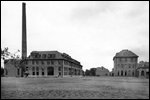 |
1915: Henry Ford Hospital, located at what was then the edge of the city of Detroit at Hamilton and West Grand Boulevards, opened its doors to patients in October. A Private Patient Building accommodated 48 patients and several other small buildings housed the surgical pavilion, research quarters, kitchens and laundry facilities, the power plant and garage. The hospital was financed and built by automotive pioneer Henry Ford, who organized a closed staff of physicians and surgeons, many of whom came from Johns Hopkins. Within two years, construction of a larger building began on the same 20 acre site. - Henry Ford Hospital is one of the first U.S. hospitals to use a standard fee schedule and favor private or semi-private rooms over large wards. It also is the first hospital in the country to form a closed, salaried medical staff. This group practice model first is scorned by the medical profession but is gradually accepted. Because of founder Henry Ford's concern that tobacco is unhealthy, Henry Ford Hospital is one of the first hospitals in the U.S. to institute a total ban on smoking. |
 |
1918: After the United States entered World War I, hospital staff members were recruited or enlisted. As the hospital could not operate on its own, Henry Ford offered it to the U.S. government for use as an Army hospital for the duration of the war. A ceremony on October 26 marked the temporary transfer of the unfinished Henry Ford Hospital to the U.S. Army. For the next eleven months, the Henry Ford Hospital would be known as the U.S. Army General Hospital No. 36. After the war ended on November 11, hospital facilities were needed to care for the hundreds of wounded and ailing American soldiers as they returned home. |
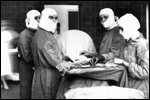 |
1919: The hospital was returned to Henry Ford by the government on November 1, and the original staff returned from their army service and again opened the hospital. That same month, a second influenza epidemic arrived, and 300 emergency beds were made available for the city. Stricken patients flooded the hospital, all of them seriously ill and many of them dying. Almost 9,000 Detroiters fell victim to the infection. 1921: On December 21, the 50,000-square-foot main hospital opened with a completely equipped diagnostic clinic, staff and 500-bed capacity. With four floors of private inpatient rooms and a six-story central unit, it offered the finest care and hospital surroundings available anywhere in the country. |
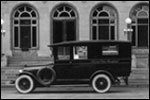 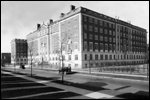 |
1923: Under the direction of Dr. Thomas J. Heldt, Henry Ford Hospital is one of the country's first general hospitals to establish a psychiatric unit within its walls. 1925: A 300-room Nurses Home named for Clara Ford was opened to house students of the newly formed Henry Ford Hospital School of Nursing. The diploma school offered training in basic sciences and nursing practice, graduating more than 5,000 students in the ensuing 71 years of its operation. The school was known for its high standards and excellence in education and practice, and "Ford grads" were easily recognized by their unique caps as well as for their skillful care of patients. 1926: The Division of Neurosurgery at Henry Ford Hospital was established by Albert Crawford. 1935: Dr. Roy McClure begins adding iodine to kitchen salt to prevent the development of endemic goiters. Eventually all salt for human use is iodized by law. 1940: Dr. Conrad Lam is the nation's first physician to administer purified heparin to treat clotting of veins. |
1941-1945
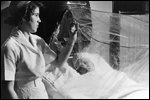 |
1942: Henry Ford Hospital is one of a few U.S. hospitals selected by the National Research Council as a trial site to test penicillin. Drs. Conrad Lam and Edward Quinn treat about 40 medical and surgical patients with the drug. 1943: Henry Ford Hospital’s Dr. Frank Hartman develops the liquid Oxygen Tent. 1944: Henry Ford Hospital becomes the first hospital to use the now-routine technique of multiple lead electrocardiograms introduced by Dr. Robert F. Ziegler. The following year, Dr. Ziegler establishes one of the first cardiology training programs in the United States, as well as initiating the hospital’s first cardiac catheterization studies program. |
1946-1970
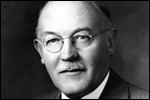 |
1947: The Edsel B. Ford Institute for Medical Research was established as Henry Ford Hospital's formal division of scientific research. The Institute developed over the years and later became a research department with activities involving millions of dollar in research grants annually and projects in many areas of medical and surgical specialization. Ultimately, in 1990, the health system's academic and research activities were brought together under the umbrella of the newly formed Henry Ford Health Sciences Center. |
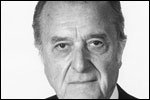 |
1948: Henry Ford Hospital urologist Dr. John K. Ormond rediscovers retroperitoneal fibrosis, now called Ormond's Disease -- a condition characterized by the development of a plaque-like mass of fibrous tissue in the retroperitoneum. Ormond described two patients with diffuse fibrosis of the retroperitoneal tissues, and established the clinical and pathological entity of idiopathic retroperitoneal fibrosis more clearly. 1951: Drs. Lam and Edward Munnell developed a technique for the correction of mitral valve stenosis, using a special six-finger glove with a knife attached to the sixth mid-palm finger. |
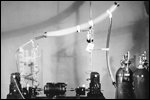 |
1952: Henry Ford vascular surgeon Dr. D. Emerick Szilagyi performs Michigan's and one of the world's first grafts of an abdominal aortic aneurysm. 1955: The hospital celebrated the opening of a 17-story Clinic Building, which housed 14 specialty outpatient clinics, a 35,000-volume medical library and 20 new operating rooms. The new facility relieved crowding. - Dr. Szilagyi established the first homograft blood vessel bank in the state. Sterilized homografts from human cadavers are used in clinical practice and shared with other institutions. - The initial meeting of what was to become the Six Clinic Conference was held in Detroit in January, and included representatives from Henry Ford Hospital, Ochsner Clinic in New Orleans and the Cleveland Clinic. In March, the group met again in New Orleans, and were joined by representatives from the Mayo Clinic in Rochester, Minnesota, and Lovelace Clinic in Albuquerque, New Mexico. In November a third meeting was held in Cleveland. This one served as the first formal meeting of the group, and included members from the sixth participant, the Lahey Clinic in Boston. For 40 years representatives of the same six institutions met annually, rotating locations among themselves, to compare ideas and activities of their multi-specialty, group practice institutions. 1956: Henry Ford cardiothoracic surgeon Dr. Conrad Lam performs the first successful open heart surgery in Michigan using the heart-lung machine. - Henry Ford’s Dr. James Barron develops the Barron Food Pump, a device used to deliver pureed food through a small nasal gastric tube. 1958: WWJ-TV in Detroit broadcasted a live telecast of a surgical procedure involving the resection of an aorta and its replacement with an artificial Dacron graft. The operation, performed by Drs. D. Emerick Szilagyi and Roger F. Smith in a Henry Ford Hospital operating suite, was described as it proceeded by television newsman James Clark. Commentary was provided by an expert panel including Dr. Henry Bahnson of Johns Hopkins Hospital, Dr. Marion S. Deweese of the University of Michigan and Dr. Eugene Osius of Harper Hospital. The live broadcast, sponsored by the Michigan State Medical Society and the Wayne County Medical Society during the 12th annual Michigan Clinical Institute, was one of the first of its kind in the United States and brought positive acclaim to the hospital and its Department of Surgery. |
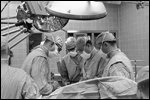 |
1960: Community Health Association - which later became Health Alliance Plan - becomes Michigan's first non-profit, prepaid group practice health plan. 1966: The Henry Ford Hospital Coronary Care Unit opened. It was one of the first of its kind in Detroit and the largest in Michigan. |
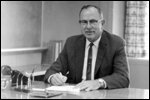 |
1967: Dr. George Mikhail performs Detroit's first Mohs Micrographic Surgery, a procedure to remove skin cancers. |
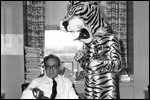 |
1968: The first allogenic kidney transplant is done in Detroit by Drs. D. Emerick Szilagyi, Joseph P. Elliott and Roger F. Smith. 1970: Drs. Charles Jackson, Melvin Block and Martin Miller are among the first in the country to use calcitonin (a hormone) testing for the early detection of medullary thyroid cancers in families. |
1971-1990
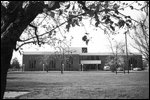 |
1971 : Henry Ford Hospital opens a satellite center, housing computer operations and clinical activities in Troy. |
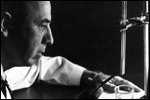 |
1973: The first renal transplant to a diabetic patient in Michigan is performed by Dr. Stanley Dienst at Henry Ford Hospital. |
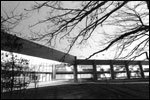 |
1975: Two large new satellite outpatient centers were opened in 1975, one in Dearborn and one in West Bloomfield. Within a short time, many former Henry Ford Hospital patients returned as they found the care they required available closer to their homes. These new centers featured family and pediatric care, dentistry, behavioral services, radiology, and pharmacy services. Thus began the expansion of Henry Ford Hospital services into the Detroit metropolitan area. |
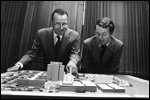 |
1976: Improvements at Henry Ford Hospital continued with the opening of a computed tomographic (CT) scanning center, which featured a $600,000 CT full-body scanner, the first such hospital-based unit in the state, as well as a smaller EMI head scanner. |
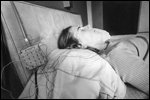 |
1978: Henry Ford Hospital opens the first Sleep Disorders Center in Michigan and the eighth in the country. 1979: Henry Ford Hospital was one of the pioneers in performing coronary angioplasty. This balloon procedure has revolutionized cardiology care for patients with coronary disease. 1980: The Department of Neurology acquired the first Topical Magnetic Resonance (TMR) unit in the nation, providing increased capability of non-invasive exploration of the brain and other organs. The department also achieved a designation as one of 12 Stroke Centers in the United States. - Henry Ford otolaryngologist Dr. Shiro Fujita developed a surgical procedure called uvulopalato-pharyngoplasty to enlarge the oropharyngeal airway in patients with obstructive sleep apnea. The procedure was later adopted nationwide, and the Center for Sleep Disorders incorporated this treatment into their research on blood oxygen levels in sleep apnea patients. - Drs. Fred W. Whitehouse and Dorothy A. Kahkonen were the first physicians in Michigan and the second in the country to administer human insulin to a patient with diabetes. |
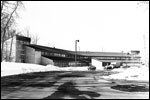 |
1981: Maplegrove was built on a secluded site at the West Bloomfield campus. The 40,000-square-foot, 50-bed center, in its peaceful woodsy setting, opened in February. It featured bedrooms, lounges, a library, examining rooms, therapy and staff areas and recreational areas. A multidisciplinary staff of physicians, nurses, counselors and therapists provided a four-week residential program, a three-phase program for the recovery of adult alcohol-addicted patients, as well as outpatient programs. Betty Ford came to Detroit to dedicate the Center. |
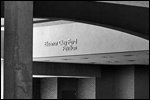 |
1982: A 210,000-square-foot addition called Eleanor Clay Ford Pavilion opened, housing new operating rooms, modern emergency room facilities, intensive care units and radiology facilities. 1983: The Hospital's Board of Trustees reorganized by incorporating a parent organization called the Henry Ford Health Care Corporation to oversee the operations of the hospital and two subsidiaries. During the late 1980s, the hospital affiliated with Cottage, Wyandotte and Kingswood Hospitals, and added an HMO called Health Alliance Plan. |
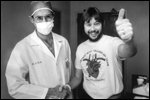 |
1985: Drs. Fraser Keith and Donald Magilligan performed Detroit's first heart transplant. David Butts, a 38-year-old patient from Portage, Michigan, recovered well from this surgery and his rehabilitation was supervised by hospital cardiology staff. Butts was married and became a father, and was able to live a fairly normal family and work life until his death ten years later. Transplantation surgery continued successfully at the hospital after that first procedure. Additional heart transplants followed (34 in the first year), and in 1986 Blue Cross Blue Shield designated Henry Ford Hospital as an approved heart transplant center. - The first extracorporal shock wave lithotripsy in Michigan is performed at Henry Ford Hospital. This non-invasive procedure breaks kidney stones into sand-like grains which are easily passed from the body. |
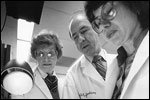 |
1986: The Henry Ford Bone & Joint Center is established. It is the first multidisciplinary medical/surgical department of its type in Michigan. 1987: Dr. Charles Jackson and other Henry Ford and Yale researchers identify the location of a gene on chromosome 10, linked to hereditary medullary thyroid cancer. In 1993, the gene itself is identified. - The first use of iodine radium implant seeds in Michigan is at Henry Ford Hospital. These seeds are used to combat cancerous cells in the prostate. - The first pancreas transplant at Henry Ford Hospital was performed by transplant surgeon Dr. Heung Oh. The hospital was one of three centers in Michigan to conduct this surgery. |
|
1988: Henry Ford Hospital establishes a center for the treatment of conditions affecting the human voice, called the Center for the Performing Artist, the first of its kind in Michigan and one of the first in the nation. - The first liver transplant in Detroit was performed at Henry Ford Hospital by Drs. Richard Dow and Martin F. Mozes. |
|
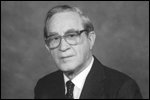 |
1990: Henry Ford Health implements the Quality Management Process system-wide, one of the first hospital systems in the country to initiate this process. - Dr. Clarence Livingood is the recipient of the AMA Distinguished Service Award, the only Michigan physician to have been so honored. - Henry Ford Mercy Health Network is established as a unique, collaborative joint venture that shares the resources and the expertise of the two health systems. |
1991-Present
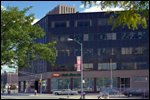 |
1993: Henry Ford Health and the Institute for Healthcare Improvement form the Group Practice Improvement Network, with 58 multi-specialty groups to improve quality and value of medical group practices through shared learning.
- Health Alliance Plan is Detroit's first HMO to be fully accredited by the National Committee for Quality Assurance. |
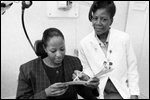 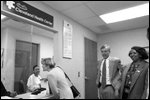 |
1994: The National Committee for Quality Health Care awards Henry Ford Health the first National Quality Award for Health Care Integration, for its success in integrating quality values in the organization. - A generalist training program for students and residents, one of a handful in the country, is launched in partnership with Case Western Reserve University in Cleveland. - Henry Ford Health establishes one of the first four tinnitus (ringing in the ear) centers in the country, located in Grosse Pointe Farms. - Henry Ford Hospital is the only facility in Michigan selected by the National Cancer Institute to join a national consortium to research new treatments and therapies for brain tumors. - Henry Ford Hospital performs the first lung transplant in metro Detroit, making Henry Ford Hospital the only facility in metro Detroit to perform all solid organ transplants. |
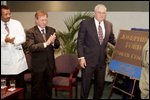  |
1995: The Walter and Josephine Ford Cancer Institute conducts Michigan's first radiosurgery treatment for patients with inoperable tumors using the three-dimensional x-knife system. - The National Institutes of Health designates the Department of Neurology as a headache research center, the first in the country. - The Henry Ford Smell and Taste Center opens, one of the only ten in the country that specializes in treating patients with loss of taste or smell. - Henry Ford Hospital is selected as the only Michigan radiology facility to offer catheter-guided placement of a device for the treatment of high-risk or inoperable brain aneurysms. - The W.K. Kellogg Foundation awards Henry Ford Health $4 million to develop 13 school-based health centers that will provide primary care to students in Detroit Public Schools. - Henry Ford Health opens the Center for Senior Independence, a comprehensive medical program that assists the elderly to live independently in their homes and in the community. - Henry Ford Health president and chief executive officer Gail L. Warden begins his one-year term as chairman of the American Hospital Association. Henry Ford is the only institution in the nation to have had three of its chief executives serve as AHA chairman. The other two are Dr. Robin Buerki (1935-36) and Stanley Nelson (1982). - Henry Ford Hospital is one of nine hospitals in the nation designated by the National Institutes of Health as a stroke research center. - Horizon Health System merges with Henry Ford Health, uniquely combining the educational programs of allopathic and osteopathic physicians leading to dual certifications. |
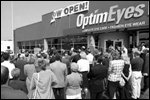 |
1996: OptimEyes (formerly First Optometry), with its 51 optometry locations in Michigan, joins Henry Ford Health. - Henry Ford Hospital performs the state's first split-liver transplant, during which a donor's liver is split in two and the halves are transplanted into two patients. A cross-racial, living kidney transplant is performed involving two friends. It is the first in Michigan and one of only two dozen in the country. 1997: Henry Ford Medical Group joins the American Medical Association, making it the largest medical group in the AMA. |
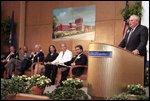 |
1998: Josephine Ford donates $10 million to Henry Ford's Cancer Institute, which is renamed in her honor. - Henry Ford is the state's first hospital to offer genetic testing for breast cancer. - The $75 million, 185,000-square-foot Henry Ford II Pavilion opens to patients. - Henry Ford Heart & Vascular Institute performed Michigan's youngest pediatric heart transplant with Children's Hospital of Michigan |
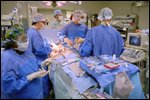 |
1999: Friends and family of David Hermelin, ambassador to Norway, pledge $10 million to create a brain tumor research center at Henry Ford. - HAP named General Motors "benchmark HMO" based on quality. HAP is the only HMO in Michigan and one of 13 HMOs named by GM. 2000: Henry Ford Hospital performs Michigan's first adult-to-adult, living donor liver transplant. The fourteen hour operation by Drs. Marwan Abouljoud and Atsi Yoshida, was the two hundredth to be performed nationwide. |
 |
2001: The Vattikuti Foundation is created through the generous donation by Raj and Padma Vattikuti. The gift is a $40 million donation to support cancer research and treatment programs at Henry Ford Health and Beaumont Hospitals. In partnership, the institutions work on new treatment methods and education in the prevention of prostate and breast cancers. - The Vattikuti Urology Institute, under the direction of Dr. Mani Menon, is the first in the country to routinely perform surgery usi Cookie ConsentWe use cookies to improve your website experience. By using this site, you agree to our Terms of Use. Read our Internet Privacy Statement to learn what information we collect and how we use it. Accept All
Dismiss
|
.svg?iar=0&hash=F6049510E33E4E6D8196C26CCC0A64A4)

/hfh-logo-main--white.svg?iar=0&hash=ED491CBFADFB7670FAE94559C98D7798)